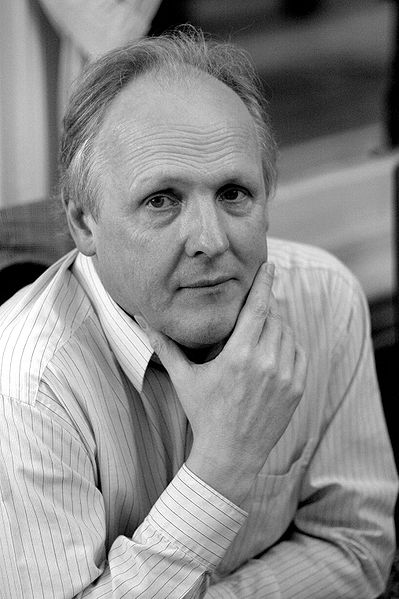|
Retrenchment (computing)
Retrenchment is a technique associated with Formal Methods In computer science, formal methods are mathematically rigorous techniques for the specification, development, and verification of software and hardware systems. The use of formal methods for software and hardware design is motivated by the exp ... that was introduced to address some of the perceived limitations of formal, model based refinement, for situations in which refinement might be regarded as desirable in principle, but turned out to be unusable, or nearly unusable, in practice. It was primarily developed at the School of Computer Science, University of Manchester. External linksThe Retrenchment Homepage Formal methods Software development philosophies Department of Computer Science, University of Manchester {{Comp-sci-stub ... [...More Info...] [...Related Items...] OR: [Wikipedia] [Google] [Baidu] |
|
|
Formal Methods
In computer science, formal methods are mathematically rigorous techniques for the specification, development, and verification of software and hardware systems. The use of formal methods for software and hardware design is motivated by the expectation that, as in other engineering disciplines, performing appropriate mathematical analysis can contribute to the reliability and robustness of a design. Formal methods employ a variety of theoretical computer science fundamentals, including logic calculi, formal languages, automata theory, control theory, program semantics, type systems, and type theory. Background Semi-Formal Methods are formalisms and languages that are not considered fully “formal”. It defers the task of completing the semantics to a later stage, which is then done either by human interpretation or by interpretation through software like code or test case generators. Taxonomy Formal methods can be used at a number of levels: Level 0: Formal specifi ... [...More Info...] [...Related Items...] OR: [Wikipedia] [Google] [Baidu] |
|
 |
University Of Manchester School Of Computer Science
The Department of Computer Science at the University of Manchester is the longest established department of Computer Science in the United Kingdom and one of the largest. It is located in the Kilburn Building on the Oxford Road and currently has over 800 students taking a wide range of undergraduate and postgraduate courses and 60 full-time academic staff. Teaching and study Undergraduate The Department currently offers a wide range of undergraduate courses from Bachelor of Science (BSc), Bachelor of Engineering (BEng) and Master of Engineering (MEng). These are available as single honours or as joint honours degrees within the themes of Artificial Intelligence, Computer Science, Computer systems engineering, Software engineering, Mathematics, Internet Computing, Business applications and Management. Industrial placements are offered with all undergraduate courses. Postgraduate At postgraduate level the department offers taught Master of Science (MSc) degrees, a ... [...More Info...] [...Related Items...] OR: [Wikipedia] [Google] [Baidu] |
|
Formal Methods
In computer science, formal methods are mathematically rigorous techniques for the specification, development, and verification of software and hardware systems. The use of formal methods for software and hardware design is motivated by the expectation that, as in other engineering disciplines, performing appropriate mathematical analysis can contribute to the reliability and robustness of a design. Formal methods employ a variety of theoretical computer science fundamentals, including logic calculi, formal languages, automata theory, control theory, program semantics, type systems, and type theory. Background Semi-Formal Methods are formalisms and languages that are not considered fully “formal”. It defers the task of completing the semantics to a later stage, which is then done either by human interpretation or by interpretation through software like code or test case generators. Taxonomy Formal methods can be used at a number of levels: Level 0: Formal specifi ... [...More Info...] [...Related Items...] OR: [Wikipedia] [Google] [Baidu] |
|
|
Software Development Philosophies
Software is a set of computer programs and associated documentation and data. This is in contrast to hardware, from which the system is built and which actually performs the work. At the lowest programming level, executable code consists of machine language instructions supported by an individual processor—typically a central processing unit (CPU) or a graphics processing unit (GPU). Machine language consists of groups of binary values signifying processor instructions that change the state of the computer from its preceding state. For example, an instruction may change the value stored in a particular storage location in the computer—an effect that is not directly observable to the user. An instruction may also invoke one of many input or output operations, for example displaying some text on a computer screen; causing state changes which should be visible to the user. The processor executes the instructions in the order they are provided, unless it is instructe ... [...More Info...] [...Related Items...] OR: [Wikipedia] [Google] [Baidu] |